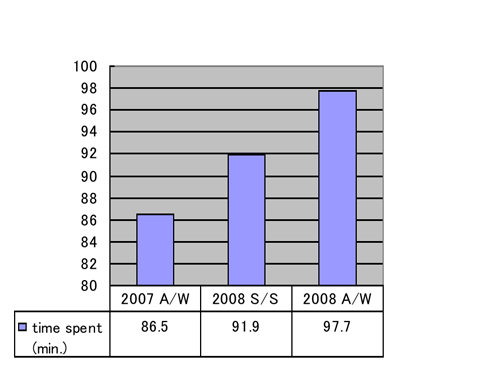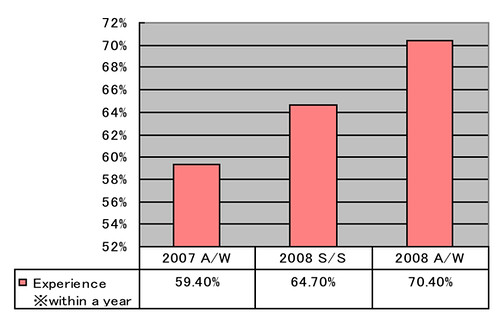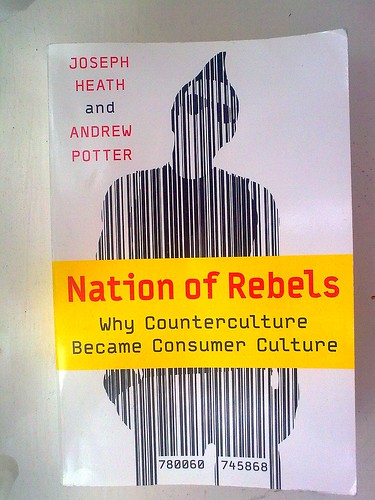Blyk
Communities Dominate Brands: Average Blyk campaign 100K messages, average segment only 8K youth – digging into Blyk stats – so much in this. Blyk took a model that had been popular in Africa and India – funding data, messaging and voice services with advertising and took it to the next level: a mobile carrier paid for by advertising. Blyk targeted young people and had offices in Finland, the Netherlands, the United Kingdom and in India. The Blyk model doesn’t add up in the face of modern carrier practices bundling services in post-paid and pre-paid services.
Beauty
Clinique, Sony Star in Web Sitcom – WSJ.com
Consumer behaviour
Texting Is Preferred Communication Method for College Students
danah boyd on teens and social technology
Study: 8.5 Hours a Day Spent on Screens – PSFK.com
Culture
DUB TV Multimedia Production – surreal Russian dub and breaks site
Design
Made in design – cool contemporary design stuff
Otto Wooden Fan : Swizz Style – Designer Products for your Home – really nice design. If Charles Eames had designed a fan, this would be it
Finance
China Moves Closer to Nasdaq-Style Market – WSJ.com
Hong Kong
Openrice – Hong Kong Restaurants Guide – Most of the reviews are in Chinese
How to
Want to Save Money? Carry Around $100 Bills – TIME
There Is No Secret Sauce in SEO!
Zoho CRM: A Good Option for Web Workers
Optimal Workshop: Home – handy research tools
Keyword and Topic Research with Wikipedia Visualization Tools
Tinker Gives Twitter Its Long Awaited Events Firehose – interesting new service for Twitter monitoring
Ideas
The Civil Heretic – Freeman Dyson – NYTimes.com – interesting the reaction that views beyond the orthodoxy of the global warming codex gets from a liberal estanblishment who should know better
apophenia: Bernie Hogan: “Networking in Everyday Life”
A Model of The Creative Process
Innovation
Nokia aims to prove there is mobile demand beyond the iPhone » VentureBeat – the Morph nanotechnology video at the end is really cool
HK, Shenzhen agree on innovation plan – interesting range of focus across a spread of technologies
Japan
Macne Nana – for a anime version of the girly T-Pain sound
Luxury
Dapper and pissed off – Slate Magazine – interesting article about how important appearance and dressing is in Nigerian culture. The right look and an up to date cell phone make all the difference apparently
Malaysia
Malaysia’s big turn off | Market-interactive.com – interesting Malaysian take on the Earth Hour phenomena
Marketing
Nobody does potholes like KFC – pure ambient advertising genius until there’s a class action suit from some hick who was distracted by Colonel Sanders message on the road and rear-ends his neighbour’s pick-up truck
Wolff Olins : Research
Engage different consumers in different ways – why segmentation is key
Media
Beet.TV: High Priestess of Social Media Charlene Li: “Metrics for Online Video is a Curse”
CBS Cancels ‘Guiding Light,’ Soap With 72-Year History – NYTimes.com
Oh Yeah? Prove It. | Altitude Branding | Brand Elevation through Social Media
Herald Tribune launches global online edition – Brand Republic News – Brand Republic
Add Your Twitter Blog to Technorati Directory
Google China Music Search, Now Available Everywhere – it seems like the music industry in China is getting some smarts (at least compared to their cousins in the West)
The Sorry State of the Newspaper Industry: Advertising Income Fell 16.6% in 2008 – ReadWriteWeb
Time to revisit social media sponsorship | Blog | Econsultancy
EU Rejects ‘3 Strikes’ for File-Sharers | TorrentFreak
IAB Reports Internet Advertising Grew 10 Percent Last Year; Outpacing TV
In Europe, Possible Survival Lessons for U.S. Papers – NYTimes.com
Who’s Messing With the Google Book Settlement? Hint: They’re in Redmond, Washington | Epicenter from Wired.com
Facebook CFO Gideon Yu out: Personality conflict, money issues, part of IPO plan, or what? » VentureBeat
Online
fifty six minus one dot com :: » kaixin001 + magnum :: – casual games, gifting. The ability to build complete microsites within a popular Chinese social network. This kicks the crap out of Facebook and Bebo
Hunch: Flickr Founder to Turn Indecision into Profits
Qaiku – Twitter like service
Facebook at 5 – Is It Growing Up Too Fast? – NYTimes.com
Google Updates Blog Search Algorithm | WebProNews
Public timeline – MicroPlaza
Microsoft To Shutter Encarta, Read All About It On Wikipedia
Digital Hub FM – really nice local radio station site built on the Webjam platform
Social Networking Watch: MySpace Is Losing Popularity
Poor economy killed Wikia Search » VentureBeat
URL shortening service Bit.ly raises cash, but where’s the money? | Econsultancy
Retailing
Masters of Media, New Media MA Amsterdam » How to Pave a Digital Silk Road
Security
Joining dots between social sites reveals anonymous users – tech – 30 March 2009 – New Scientist
Shopping
Audio Gold – quality used Hi-fi equipment – lusting after an old Mackintosh pre and power amp combo for glorious analogue sonic fidelity
Software
plainview : software : the barbarian group
fruux – Just Sync, No-frills!
Travelodge launches iPhone booking service | Blog | Econsultancy
HP May Use Google Android For Netbooks (HPQ, GOOG)
Technology
Google uncloaks once-secret server
Is Microsoft Set to Abandon its Top-Down Zune Approach?
Welcome To Your Social Economy | Digital China Guide
BBC NEWS | Nintendo Wii sales hit 50 million – fastest selling games console in history
Telecoms
Akamai Data: Internet, Broadband Still Going & Growing
Web of no web
middledigit.net | jonathan hopkins » Digital meets analogue, online meets offline – Jonathan on the web of no web, how the matrix is bleeding into real life and vice versa
Wireless
Prepaid subscribers continue to flourish in Europe – Rethink Wireless
Smartphone Sales to Keep Growing
Earnings: 3 Group Narrows Losses As Mobile Broadband Surges | mocoNews



